#Kahurangi National Park
Text
Thousand Acre Plateau Track
Thousand Acre Plateau Track
A less well known track, which is the match of any of the Great Walks, Thousand Acre Plateau Track passes through a quite unique part of Kahurangi National Park at the top of the South Island. It’s a ~44km out and back walk starting about half an hour from Murchison, suitable for people looking for something more adventurous and challenging than the Great Walks, and is best attempted in dry…
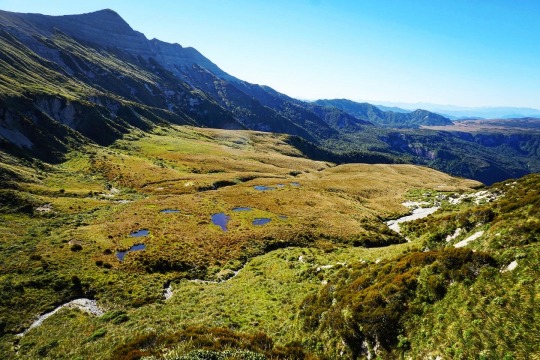
View On WordPress
#hikes#Hiking#Kahurangi National Park#Lake Matiri#Lake Matiri Hut#Larrikin Creek Hut#Mt Misery#photography#Poor Petes Hut#The Haystack#The Needle#Thousand Acre Plateau#Tramp#tramping#travel
2 notes
·
View notes
Text
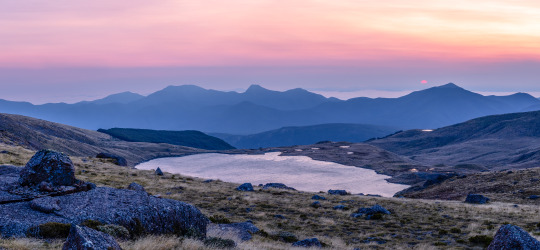
Lake Sylvester during the sunrise. Near Iron Lake looking towards Nelson. Kahurangi National Park, New Zealand - Michal Klajban. 1 January, 2020
#purple#purple aesthetic#2014 tumblr#aesthetic#2014 nostalgia#naturecore#nature#landscape photography#sunset#New Zealand landscape
6 notes
·
View notes
Note
Moria gate, kahurangi national park, karamea area, new zealand

2 notes
·
View notes
Text
Do, 30. März
Mount Arthur, Kahurangi National Park
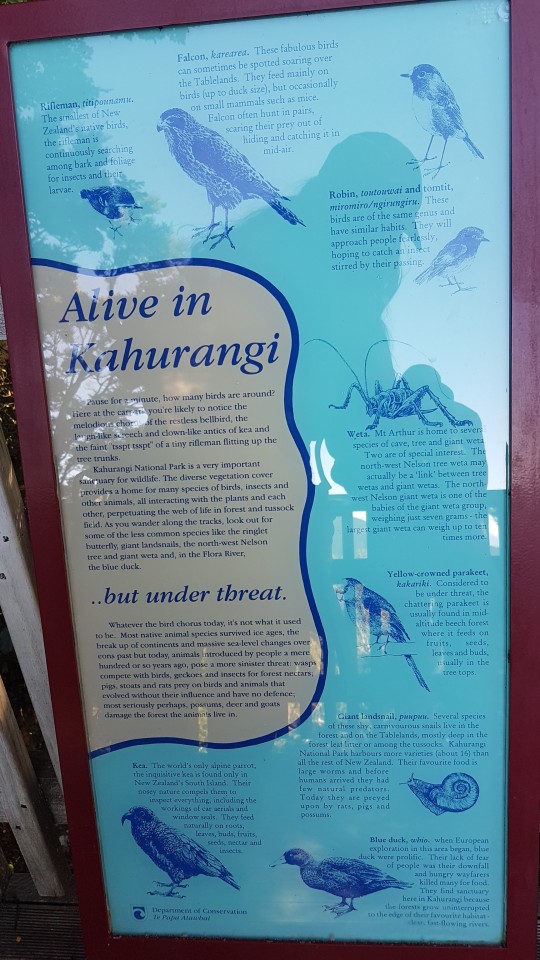


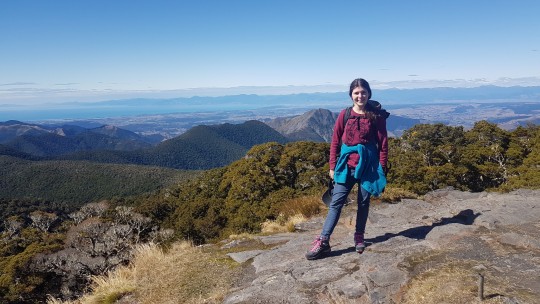
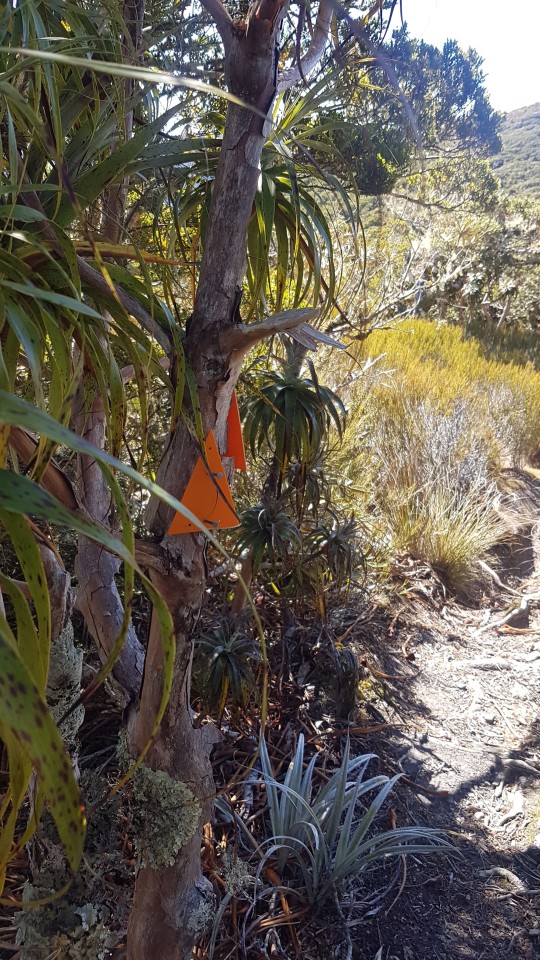

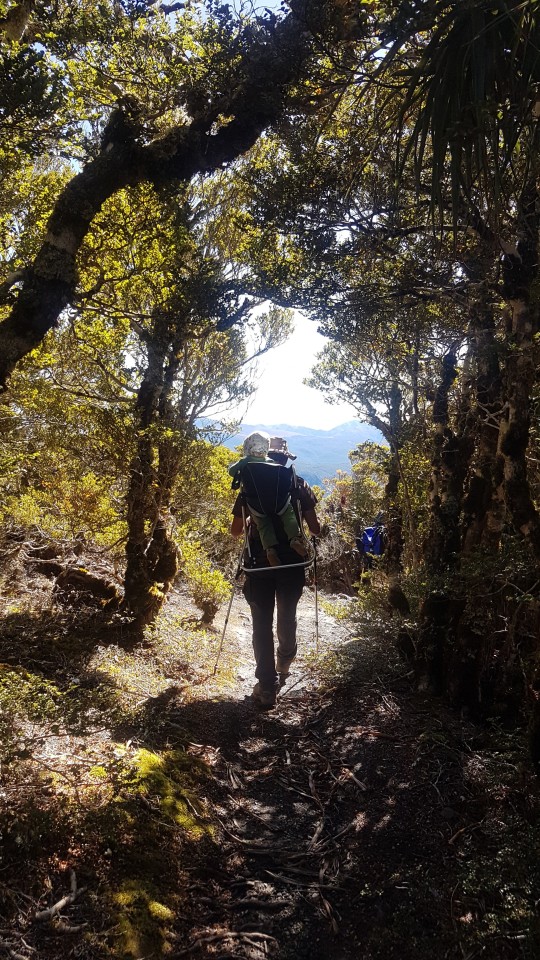



Gemeinsam mit meiner Patentantes Schwiegerpapa, Schwiegermama, ihrer Schwester + Mann gingen die 1,5 Jährige und ich heute auf Wanderschaft. Ein aufregender Tag für sie und alle anderen, das erste Mal ein ganzer Tag mit den Großeltern unterwegs!
Nach ca. 1 Stunde Autofahrt sind wir im Kahurangi Nationalpark angelangt. Unser Auto kraxelt tapfer die Straße hoch von der wir froh und glücklich sind, dass wir sie befahren klnnen. Je nach Wetter der vergangenen Tagen/Wochen ist das nämlich nicht immer möglich. Irgendwo im Nirgendwo befindet sich zu unserer Rechten plötzlich ein Tor. Dort lebt ein befreundetes älteres Ehepaar aus Deutschland schon seit vielen Jahren. Nachdem wir Kuchen für später dort depuniert haben sind wir 10 Minuten später am Parkplatz.
Die Wanderung auf den Mount Arthur durch den Kahurangi Nationalpark ist großartig! Ich trage Wickelsachen, Kleidung, Verpflegung von M., ihr Großvater trägt sie. Wir hören viele Bellbirds, einen haben wir sogar beobachten können. Deren Rufe klingen unglaublich schön. Sie werden oft von den Tuis nachgemacht, wobei sich die Stimmenimmitierenden Vögel durch Krächzen am Ende der Rufe verraten.
Wir laufen durch neuseeländisch typischen Wald. Viele palmenartige Bäume stehen zwischen Laubbäumen, Büschen und es kommt einem vor wie ein Urwald, allerdings mit immer niedrigeren Bäumen ja höher wir dem Pfad folgen. Dort oben wachsen Birken, bewachsen mit Moos. An ein paar von ihnen entdecken wir kleine Tauartige Tropfen an ca. 1-2 cm langen dünnen Fäden. Ich nehme diesen vorsichtig auf den Finger und koste ihn, sooo süß! Früh am Morgen sind die Birken voller dieser Tropfen welche von Bienen eingesammelt werden. So entsteht leckerer Birkenhonig.
An einem Picknickplatz halten wir kurze Rast. C. und ihre Schwester singen ein paar wundervolle Schweizer Lieder. Anschließend gehen wir weiter, immer höher an einer kleinen Toilette vorbei. Etwas wie ein DixiKlo, nur in Tarnfarben. Ein paar Meter weiter gelangen wir zu einer Hütte, der "Arthur Hut". Dort hat es Notfallsets, Decken, ein breites Hochbett und Matratzen. Diese Schutzhütte ist nicht die einzige im Nationalpark und wird von Abenteurern genutzt welche über mehrere Tage von Hütte zu Hütte wandern. Dort einen Platz zu ergattern ist aber gar nicht mehr so einfach und auch relativ teuer. Vor ihr hat es eine Axt und Feuerholz für den Kamin innen.
Jetzt ist es bis zur Spitze bzw dem Plateau nicht mehr weit. Der Busch lichtet sich und die Aussicht ist einfach atemberaubend schön! Wir können die Meeresbucht von Nelson sehen. Das Vogelgezwitscher und die Pflanzengerüche erfüllen die klare Luft während die Sonne und wärmt. Oft ist die 1.795 m hohe Mount Arthur-Kette umhüllt von Wolken, aber wir haben Glück. Wir genießen unsere Lunch-Boxen dort oben. Auch unser Küken findet es wahnsinnig toll dort oben und erkundet interessiert (mit Omas Hand am Schlewittchen) die kleine felsige Plattform während sie mit Opas Trekkingstöcken hantiert und versucht sie so zu benutzen wie er es die ganze Zeit tat während er sie so tapfer trug.
Auch interessant: Die Kalkschichten innerhalb des Gesteins bilden "Arthur Marble" (Arthur Marmor). Diese sind z.T. ausgewaschen zu den tiefsten und längsten Höhlensystemen Neuseelands.
Zurück geht es einen anderen Weg. Dieser ist schön, zieht sich aber ungemein. Kleine orangefarbene KunststoffDreiecke weisen uns den richtigen Weg. Bzw unser jüngstes Gruppenmitglied. Sie weißt zum nächsten Dreieck, ruft laut "Maaamaaaa!" (was der Wortschatz dieser 1,5 Jährigen halt hergibt) und Opa hält an diesem kurz an, damit sie es lachend abklatschen kann. Läuft Opa, ganz aus Versehen selbstredend, an einem vorbei ist das natürlich unverzeihlich!
Wir kraxeln den natürlichen Pfad gerne abwärts über die Wurzeln des mytsischen Waldes. Kurz ist der Pfad nicht mehr so klar, doch wir finden zur "Flora Hut". Von dort aus geht es einen Wirtschaftsweg lang zurück zum Parkplatz. Diese Strecke über werden wir von Bachgeplätscher begleitet. Mal leiser dann wieder lauter, mal ganz schmal, dann wieder breiter als unser Weg, mal rechts, dann wieder links. Pilze sehen wir einige, Insekten, Vögel natürlich, sogar ein Auto, schöne Blumen und exotisch ausschauende Pflanzen. Achja, den Farn habe ich ja glatt vergessen. Der wächst dort überall. Wäre der Rundweg nicht bereits als Pfad/Weg vorhanden, ich glaube es gäbe kein Durchkommen durch diese dichten Sträucher, Büsche, Farngewächse, Gräser und Bäume.
Am Auto sind wir alle erschöpft, ursprünglich wollte die, abgesehen von der Kleinen, doch deutlich ältere Gesellschaft als ich wohl gar nicht allzu weit laufen. Mein Glück. Der Wald zog sich zwar und meine nicht mehr daran gewöhnten Knie fanden das stetige bergab kurze Zeit nicht so doll {Deja Vu ( ; Mama}, doch das Wandern tat gut, die Natur, die Gesellschaft und die Aussicht dort oben, umgeben von Wind und Himmel waren es eindeutig wert.
Während sich die Gäste direkt auf den Heimweg machen, genießen wir bei den Bekannten noch leckeren Tee, Apfelstrudel und Kuchen. Das kleine Aussteiger-Haus ähnelt einem Museum, Zeugnis von Reisen und Erlebnissen, Kultur und Kreativität. Das Ehepaar lebt von einem eigenen Wasser- und Stromsystem. Anders wäre es dort oben wohl kaum möglich. Zur Zeit hören sie die Hirsche wohl wieder laut röhren. Die Pause tut gut.
Zurück nach Hause trägt uns zum Glück unser Auto. Dort erwartet uns schon der Rest der Familie. J. hing am Morgen etwas durch, hatte am Vorabend leichtes Fieber gahabt mit Husten. Er und seine Mama hatten den Tag aber offensichtlich genossen und wirkten sichtlich erholt. Einen ganzen Tag Mama ganz für sich alleine, ohne kleine Schwester, hatte es zuletzt vor ihrer Geburt gegeben. Das Abendessen schmeckt vorzüglich. Beflügelt vom Tag und k.o. zugleich schlafe ich nach einer wohltuenden Dusche schnell ein, auch voller Vorfreude auf das nächste bevorstehende Abenteuer.
3 notes
·
View notes
Text
So after doing the Nikua Palm walk we headed to the Oparara Arch. This was 15 km of dirt road on low profile tyres. We did not go very fast but the drive through the Kahurangi National Park was so beautiful one didn't mind going slowly. Once we arrived at the car park, there was a whole wall of the history of logging in the area that was stopped in 1946. The road we drove on was initially created by the logging company at a cost of $25 for 20 metres - so an expensive exercise back then. it has since been upgraded. Since logging has stopped the area has regenerated.
We walked to the Oparara arch but of course their 25 minute 1 way took me considerably longer - lots of uphill and down dale. well worth the walk though. I'm afraid my pictures do not do it justice. There are other walks but we didn't have the time to do them. Hence me wanting to go back to Karamea.
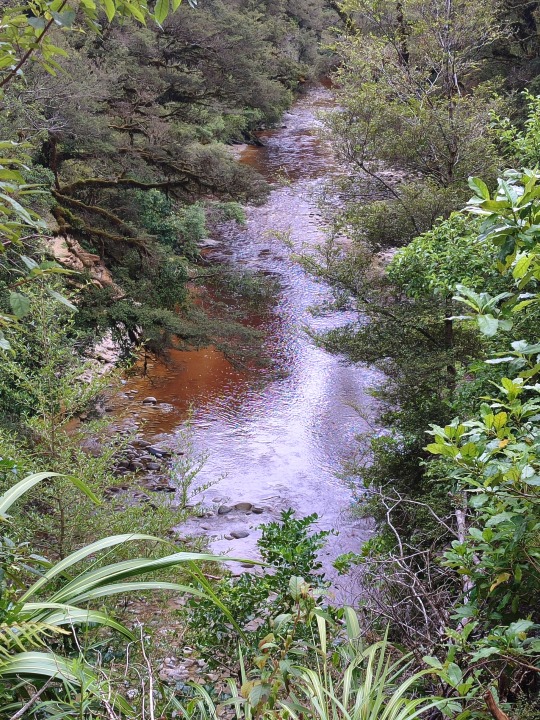
River on route to the Arch

Lichen hanging off the trees

Crossed a small waterfall
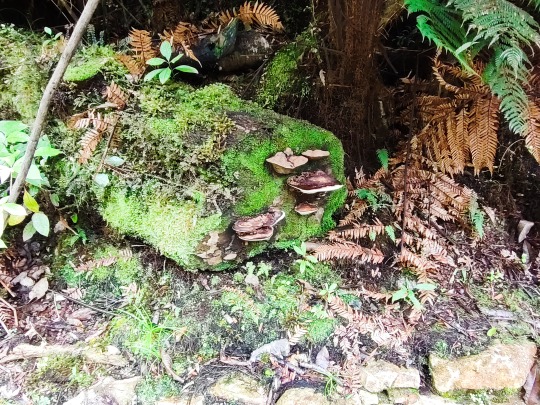
More lichen and mushrooms growing on and our of a log

Unfortunately the picture doesn't do the tree any justice. It's just covered in lichen and ferns
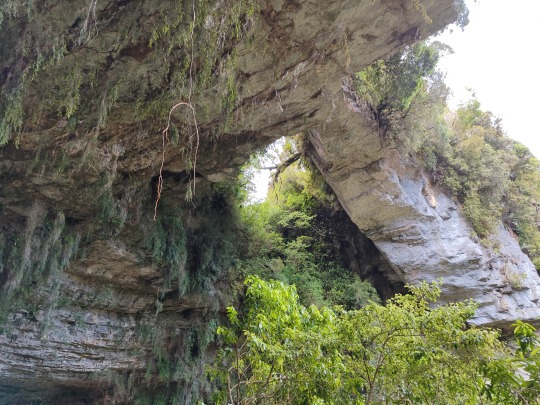
The Oparara Arch


The back end of the cave

A snail on the way back below the stairs. Was about 5 cm in diameter
Part of the track we walked. I'm not supposed to appear at the end
The road home
The next day we were heading south to Hokitika, but I read about this Rimu tree that escaped the logging and was a 1000years old so had to go and see it. Don stayed in the car and read and I did the walk to the Old Rimu Tree. It's 36 m high and 2m in diameter. Well what an anticlimax.
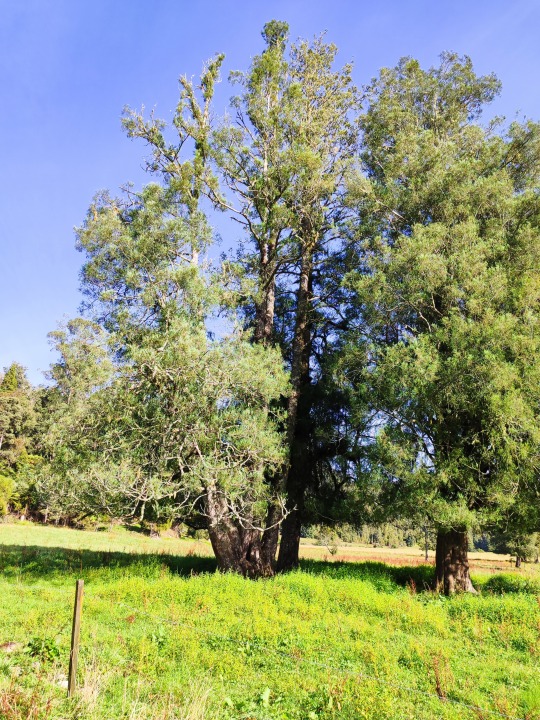
Nothing to write home about. Only way I knew I was there was because the road had been closed off and I couldn't walk further
0 notes
Text
Ranger (Fixed-Term) - Department of Conservation - Motueka
Are you someone who loves the outdoors and has lots of practical skills?
Are you passionate about managing our huts, tracks and heritage assets for all to enjoy?
Come work in what is considered the gateway town to the Able Tasman and Kahurangi National Park.
Full time, fixed-term role until 28 June 2024.
Toitū te marae a Tāne-Mahuta, toitū te marae a Tangaroa, toitū te tangata
If the land is…

View On WordPress
0 notes
Photo

by charleshatchwell on Flickr.Dragon’s Teeth - Kahurangi National Park, New Zealand.
0 notes
Photo

by charleshatchwell on Flickr.Dragon’s Teeth - Kahurangi National Park, New Zealand.
0 notes
Text
Te hapu coastal cottages

If less than 20 days’ notice is given, our policy is that if we are able to replace your booking, we will refund your deposit.įrom the 23rd of December until the 31st of January the notice period is of 30 days prior to your arrival date. Cancellation PolicyĬancellations up to 20 days prior to your arrival date incur no fee. The remaining balance should be charged/received 5 days prior to your arrival date. Please note your booking is not confirmed until we have successfully charged your credit card. For your information a merchant fee of 2.95%+0.45 cents applies. Please note a deposit value of 50% of the total amount of your booking will be taken from the credit card provided. If evidence that dogs entered the cottages are found a cleaning surcharge fee will apply. Removal of all dog faeces from around the cottages and surrounding garden (a shovel is provided). Dogs are strictly not allowed inside the accommodations, they should be tied up at night and on a lead or in behind when out walking. Provide a vet’s certificate confirming dogs have been dosed for sheep measles no less than four days prior to your arrival. Dogs are permitted at Te Hapu outside lambing and calving periods, please check. Pets by prior arrangement only - $ 20.00 per dog/horse per stay. Please let us know if you require linen (sheets and bath towels), the rate is $20 /person /per stay or would like to bring your own.Įverything else you need will be provided, apart from your food! Included in the tariff are: duvets, blankets, pillows and pillow cases, tea towels, dish cloths, hand towels, bath mat and oven cloth. If you would like to have any day visitors this needs to be discussed prior to your arrival. Suggested activities at Te Hapu, including our elevated and coastal walks, focus on exploring this stunning landscape of pasture, bush, naturally sculpture rock formations, coast and ocean.Īllow Te Hapu to work its magic on you as it has done on us since 1978. We are happy to cater for various sized groups – singles, couples, extended families. Guests are comfortably accommodated in our self-contained, fully equipped Cottage, charming Chalet (both nestled in gardens with expansive landscape and ever changing sea views), and the unique Shearing Shed Retreat with it's popular outside bath.Īll cottages are 10 minutes’ walk or drive through the farm to a variety of private, easily accessed mostly white sand beaches, cosy sheltered coves, a maze, a labyrinth, blowholes and an incredibly luxuriant low tide rock shelf. Three holiday cottages are available on our family farm, which is situated on a nationally acknowledged Outstanding Natural Landscape area. Te Hapu (the family), a Place to Experience Situated on a thousand acre coastal sheep and cattle farm, bounded by Kahurangi National Park and Golden Bay's Tasman Sea coast, South Island, New Zealand. Private Holiday Accommodation Cottages in Golden Bay, New Zealand. Move the mouse over the price for inclusions, occupancy and minimum stay Winter Special Chalet - 5 nights or more Photos Details Winter Special Shearing Shed Retreat - 5 nights or more Photos Details Winter Special Cottage - 5 nights or more Photos Details Shearing Shed Retreat Standard Photos Details Prices will be charged in New Zealand Dollars

1 note
·
View note
Text
Te hapu coastal cottages

If less than 20 days’ notice is given, our policy is that if we are able to replace your booking, we will refund your deposit.įrom the 23rd of December until the 31st of January the notice period is of 30 days prior to your arrival date. Kebijakan PembatalanĬancellations up to 20 days prior to your arrival date incur no fee. The remaining balance should be charged/received 5 days prior to your arrival date. Please note your booking is not confirmed until we have successfully charged your credit card. For your information a merchant fee of 2.95%+0.45 cents applies. Please note a deposit value of 50% of the total amount of your booking will be taken from the credit card provided. If evidence that dogs entered the cottages are found a cleaning surcharge fee will apply. Removal of all dog faeces from around the cottages and surrounding garden (a shovel is provided). Dogs are strictly not allowed inside the accommodations, they should be tied up at night and on a lead or in behind when out walking. Provide a vet’s certificate confirming dogs have been dosed for sheep measles no less than four days prior to your arrival. Dogs are permitted at Te Hapu outside lambing and calving periods, please check. Pets by prior arrangement only - $ 20.00 per dog/horse per stay. Please let us know if you require linen (sheets and bath towels), the rate is $20 /person /per stay or would like to bring your own.Įverything else you need will be provided, apart from your food! Included in the tariff are: duvets, blankets, pillows and pillow cases, tea towels, dish cloths, hand towels, bath mat and oven cloth. If you would like to have any day visitors this needs to be discussed prior to your arrival. Suggested activities at Te Hapu, including our elevated and coastal walks, focus on exploring this stunning landscape of pasture, bush, naturally sculpture rock formations, coast and ocean.Īllow Te Hapu to work its magic on you as it has done on us since 1978. We are happy to cater for various sized groups – singles, couples, extended families. Guests are comfortably accommodated in our self-contained, fully equipped Cottage, charming Chalet (both nestled in gardens with expansive landscape and ever changing sea views), and the unique Shearing Shed Retreat with it's popular outside bath.Īll cottages are 10 minutes’ walk or drive through the farm to a variety of private, easily accessed mostly white sand beaches, cosy sheltered coves, a maze, a labyrinth, blowholes and an incredibly luxuriant low tide rock shelf. Three holiday cottages are available on our family farm, which is situated on a nationally acknowledged Outstanding Natural Landscape area. Te Hapu (the family), a Place to Experience Situated on a thousand acre coastal sheep and cattle farm, bounded by Kahurangi National Park and Golden Bay's Tasman Sea coast, South Island, New Zealand. Private Holiday Accommodation Cottages in Golden Bay, New Zealand. Gerakkan mouse di atas harga untuk mengetahui apa saja yang termasuk, tingkat hunian dan minimal tinggal Winter Special Chalet - 5 nights or more Foto Rincian Winter Special Shearing Shed Retreat - 5 nights or more Foto Rincian Winter Special Cottage - 5 nights or more Foto Rincian Shearing Shed Retreat Standard Foto Rincian Harga akan dikenakan dalam New Zealand Dollars

0 notes
Photo
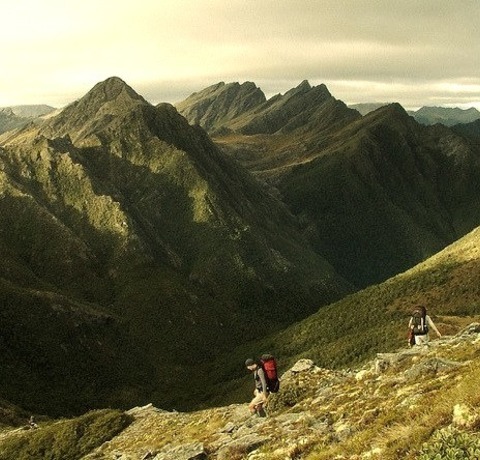
by charleshatchwell on Flickr.Dragon’s Teeth - Kahurangi National Park, New Zealand.
0 notes
Photo
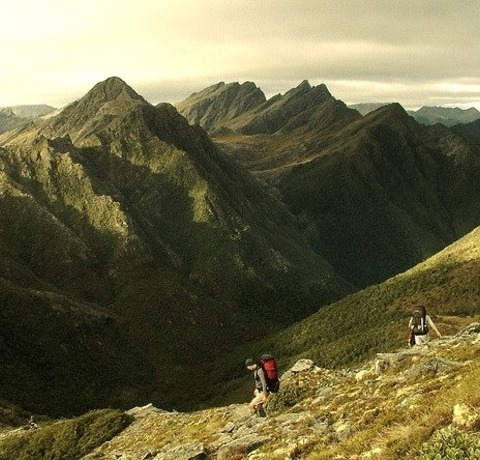
by charleshatchwell on Flickr.Dragon’s Teeth - Kahurangi National Park, New Zealand.
0 notes
Text
Top 5 National Parks in South Island
If North Island is clearly the beauty, south island has some spots that cannot go amiss. You will find some incredible places here, especially the national parks that are full of adventure trails and more. Here we will take you through the south island national parks. You can take your campervan rental New Zealand to this place to enjoy the scenic beauty and probably stay for a while too.
1. Paparoa National Park
This is one of the most popular national parks in this town. You will find some incredible cliffs and caves in this region of southisland. The park is surrounded by the spectacular coastline that you cannot miss.
It also protects the limestone karst. Several rivers including the Fox river is located along this line. The park is known for the extremely interesting formations that make for an incredible walk. You are always close to the nature and feel pleasant when you take the trail inside this park.
2. Arthur’s Pass National Park
This is the national park where people mostly go to see nature dancing and enjoying itself. The sun set is probably the most interesting part of this land. It is when the sun sets that the mountains are painted in hues of orange and gold. It almost feels like the mountains are dancing and singing as the day comes to an end. The sun sets with purple hues everywhere before it is officially gone. Park your motorhome rental New Zealand, before you enter the national park.
It also houses several wild animals, and on a lucky day you might spot them all. The rocky paths are full of beautiful scenic spaces and lush green adventures. This is the best spot for mountaineering and hunting. It is oft visited for hunting.
Apart from this, owing to the snow capped mountains, a lot of people are seen skiing on this land.
3. Westland Tai Poutini National Park
Again a national park that is surrounded by beautiful mountains and panoramic views. You will notice the streams running down while the highland mountains raging high up. There are beautiful trails and inspiring heights in this national park. The ridge in the park is definitely the highlight.
This is the place where glaciers dominate most of the spaces. The Franz Josef glacier and the Fox glacier are two hot spots of this national park. You can take your campervan rental New Zealand to visit this park.
4. Kahurangi National Park
Located along the south island, it moves into the wilderness. There are paths and spaces that haven’t been tracked completely. If you are taking a walk along this national park, make sure to follow the signs.
It is an excellent place for mountaineering. You will find several tracks and trails for walks. The park is also planning to house the endangered species of plants and animals.
5. Mount Cook National Park
Mount Cook, otherwise known as Aoraki, hosts the top peak in the country. It is about 3724 meters high and one of the most visited spots in the south island.
The national park is known for the peaks and glaciers. Most people visit the park for its incredible landscapes.
You can visit them even when the sun is high up in the sky, as they offer some dazzling views. You can move around New Zealand in your motorhome hire New Zealand.
0 notes
Text

A seven-hour hike takes travelers to Mt. Brown Hut on New Zealand’s West Coast, one of many shelters managed by the country’s Department of Conservation. Photograph By Nicksplace, Getty Images
Here’s Why Hut-hiking Is The Best Way To See New Zealand
These inexpensive overnight bunks offer spectacular views, protection from the elements, and lots of local lore.
— By Petrina Darrah | May 11, 2022
“It’s an old, moldy, grotty dog box. Absolutely disgusting. I would think about 10 people get there a year.”
That’s how Carol Exton describes Jacs Flat Bivvy, a wood-and-tin hut that sits in a dense forest at the base of a dark valley in New Zealand. It’s so small that you have to bend over to crawl inside. Yet among the country’s 1,000 government-run hiking shelters, it’s Exton’s favorite. It’s the kind of place that inspires her trekking adventures and exemplifies the lore embedded in New Zealand’s beloved hiking culture.
Indeed, in a country famous for soaring mountains and rugged coastlines, hiking is a way of life. Huts line more than 9,000 miles of public trails in New Zealand, providing an ideal framework for exploring.
Not all are two-bunk basics like Jacs Flat. Some are architectural stunners, perched on alpine ridges overlooking glaciers. Many have been around for more than a hundred years, standing as sentinels of old-growth rainforests and golden beaches. Through the decades, they’ve borne witness to history in the names and messages from past hikers etched on the walls.
It’s no wonder that these camps—many free or costing a nominal fee—inspire the kind of devotion that can motivate people like Exton to visit every hut in the country.
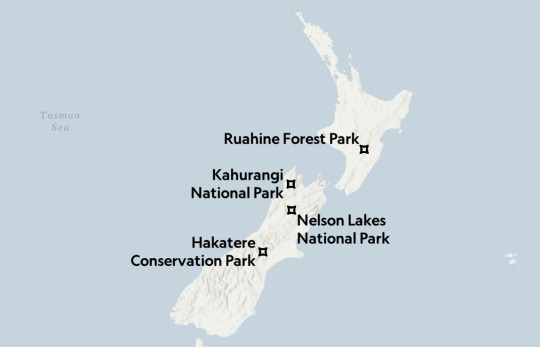
Icons of National Heritage
Huts first appeared in New Zealand’s remote backcountry in the late 1880s. Using local stone, sheep herders built them into the tussocked foothills of the Southern Alps. Gold miners scraped tin huts together on the banks of rivers. Some outliers were erected on desolate coastlines, as refuges for castaways from sunken ships.
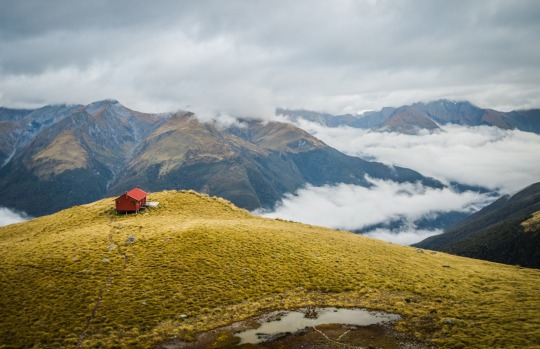
Brewster Hut is perched on a hill above Brewster Glacier in New Zealand’s Otago region. Many Department of Conservation huts are located in stunning natural areas. Photograph By Timon Peskin, IStockPhotoGetty Images
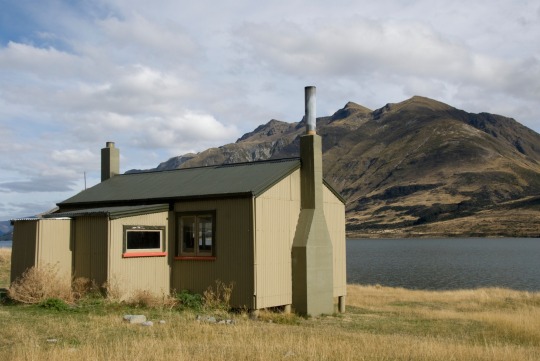

Left: Carys Hut—a first-come, first-served hut—sits on the banks of North Mavora Lake in Mavora Lakes Conservation Park. Photograph By Geoff Marshall, Alamy Stock Photo Right: The Hanging Valley Emergency Shelter is located on the Kepler Track, a trail that takes travelers through South West New Zealand’s World Heritage Area. Photograph By Vincent Lowe, Alamy Stock Photo
The shelters cropped up in even greater numbers in the mid-20th century, in the wake of ecological damage caused by deer, chamois, and other animals released by European colonists to make New Zealand feel more like “home.” Over the ensuing decades, professional cullers eradicated hundreds of thousands of these animals and left behind a legacy of six bunk huts in some of the most isolated parts of the country.
More huts arose from stranger circumstances. Along the rugged south coast of Fiordland, in a sea cave not far above the high-tide line, lies a five-bunk hut built by a man named Owen West. “Westy,” as he was known, alighted at this spot in the mid-1980s after jumping off a fishing boat following an argument. According to legend, he swam through formidable surf to the shore, where he pulled flotsam and jetsam from the sea to build his abode.
Then there are the huts that sheltered people on the run. Ellis Hut, in Ruahine Forest Park, is named after Jack Ellis, an accused murderer who hid here from authorities in 1904. Asbestos Cottage, in Kahurangi National Park, was once the home of a woman escaping an abusive husband. She fled to the mountain hideaway with her lover in 1914 and lived there for 30 years.
Many huts had former lives as schoolhouses, lighthouse keeper cabins, and homesteads—all eventually converted for public use. By the time the Department of Conservation (DOC) was formed and inherited the entire hut network in 1987, there were hundreds of huts scattered like buckshot through the mountains of New Zealand.
Mountain Memories
These origin stories combined with each hut’s architectural features (or lack thereof) add to the lore that make hiking in New Zealand so appealing.
Brian Dobbie, 64, worked on the team that manages the hut network since DOC’s inception. Over the past 34 years, he’s seen all manner of huts, including one painted bright purple with orange flowers, where he spent a funky night in the 1980s.

Goat Creek Hut is a four-bunk “bivvy,” a bare-bones type of shelter beloved by die-hard hut hiking fans. Photograph By Tim Cuff, Alamy Stock Photo
He believes that because DOC huts are always open and accessible to everyone, they foster a certain conviviality among strangers. He recalls one trip when a torrential downpour drove him and dozens of others out of their flooding tents and into one small hut. “At one stage there were 30 of us in the six-bunk hut,” he says. “We had less than three square feet each.” They cheerfully made do.
That’s part of the allure, says Dobbie. Even the humblest shack can take on a significance that transcends its corrugated iron roof and timber walls. They become places of connection and self-reflection, places where memories are made and simple pleasures savored.

Hamilton Hut, in Arthur’s Pass National Park, offers 20 bunks. No matter the size of the hut, it’s customary to make room for new arrivals and put the tea kettle on for them. Photograph By Geoff Marshall, Alamy Stock Photo
The logbooks tell the tales in the scribbles of hikers passing through. In lesser-used huts—the most popular kind—logbooks might date back years, with only a handful of entries recorded over a 12-month stretch. Not all are made of paper. “The logbook for Jacs Flat Bivvy is the door,” says Exton, where people have scratched their names along with a few short phrases about where they’re going and what they’re doing.
This recording tradition means some huts yield startling finds. On a wall in Double Hut, in Hakatere Conservation Park, in Canterbury, Dobbie spied a particularly famous name scrawled among several others. “[It] was Sir Edmund Hillary,” he says. “Of course, [he didn’t write] ‘Sir Edmund.’ It was ‘Ed Hillary.’ This man, who topped the highest mountain in the world, also stayed here and left his mark.”
A Local Obsession
The potential for uncovering such hidden stories is one reason some particularly zealous hikers have made it their mission to visit every hut in the DOC network. These “hut baggers,” as they call themselves, come from all walks of life and have often been obsessed since childhood.
Exton grew up in a suburb of Wellington, bordered by the harbor on one side and steep bush-covered slopes on the other. While her classmates walked home from school along the road, Exton took to the hills. “For two or three hours between school and teatime I used to just go off and explore,” she recalls. Now 60, Exton often disappears into the hills, packrafting, kayaking, and hiking her way to some of the most remote huts in the country. So far, she’s clocked 525 huts.

Some huts, such as Luxmore in Fjordland, pictured here, are large enough to house many groups. Luxmore has room for 54. Photograph By Vincent Lowe, Alamy Stock Photo
She thrives on the irresistible allure of huts scattered through the wilderness, just waiting to be found. The more difficult to access, the greater the thrill. Reaching Jacs Flat Bivvy took two attempts, a three-day trek and “a hard 12 hours” of hiking, she says.
Benjamin Piggot loves the freedom that hut-hiking affords. “It’s an escape,” says the 25-year-old. “It’s time to go reset with your friends, have a cup of tea around the fire, and talk about things that actually matter.”
Piggot visited his first hut when he was 11 years old, which sparked a lifelong passion. Since going all in 10 years ago, he’s logged 312 huts. His favorite is East Matakitaki, reachable via a six-day hike into Nelson Lakes National Park. “It was just a brilliant trip, lots of snow, lots of adventure, one of those trips where you were cold and wet most of the time,” he remembers.
Feeling bonded to nature is what hut hiking is all about. “New Zealanders are an outdoor going kind of people,” Piggot says. “I think that we have a deep-seated connection, to ngahere [in the Maori language], to the land and the forest.”
TRAVEL TIPS:
Reservations: Huts are priced according to the facilities they offer and range from free (basic) to about $10 USD per night for a serviced hut with heat and cooking facilities. Great Walk huts are the most comfortable with gas cooking, solar lighting, and flushing toilets. They’re also the most expensive at about $75 USD and must be booked online. The vast majority of backcountry huts don’t require booking and are paid for via hut tickets, which you can buy in advance and use as you go. The DOC’s online mapping tool lists each hut, along with its location, fees, and features.
Etiquette: Non-bookable huts operate on a first-come, first-served basis, but getting in first doesn’t mean the hut is yours. It’s customary to make space for latecomers—even if the hut is full—and to put the kettle on for them.
Some huts have dedicated wardens, or managers, but many aren’t serviced for months at a time. Hikers contribute to keeping huts clean and tidy. Before you leave, sweep the floors, wipe the benches, and restock the firewood. Carry out all your trash (don’t burn it or throw it in latrines).
Health advisory: As of press time, there are no vaccine requirements for staying in DOC huts, so visitors should assess the risk of exposure to COVID-19 when planning their trip. As sleeping, cooking, and washing facilities are often shared, you may wish to look at options such as pitching a tent close to the hut when camping is allowed, or avoiding busy periods such as Saturday nights and holiday weekends.
0 notes
Text
Cowins Spur Track
A tough and off the beaten track hike in the Wharepapa / Arthur Range in Kahurangi National Park, found through exploring topomaps for day hikes near Tapawera. It was hard work climbing 1,100m up to the bush line, but it was a rewarding and scenic day in the hills.
The track starts 25 minutes drive up the gravel Baton Valley Road, with an easy stream crossing.
It’s an easy walk alongside Baton…

View On WordPress
#Arthur Range#Baton Valley Road#Cowins Spur Track#Hiking#Kahurangi National Park#photography#South Island#tramping#travel#Wharepapa Range
1 note
·
View note